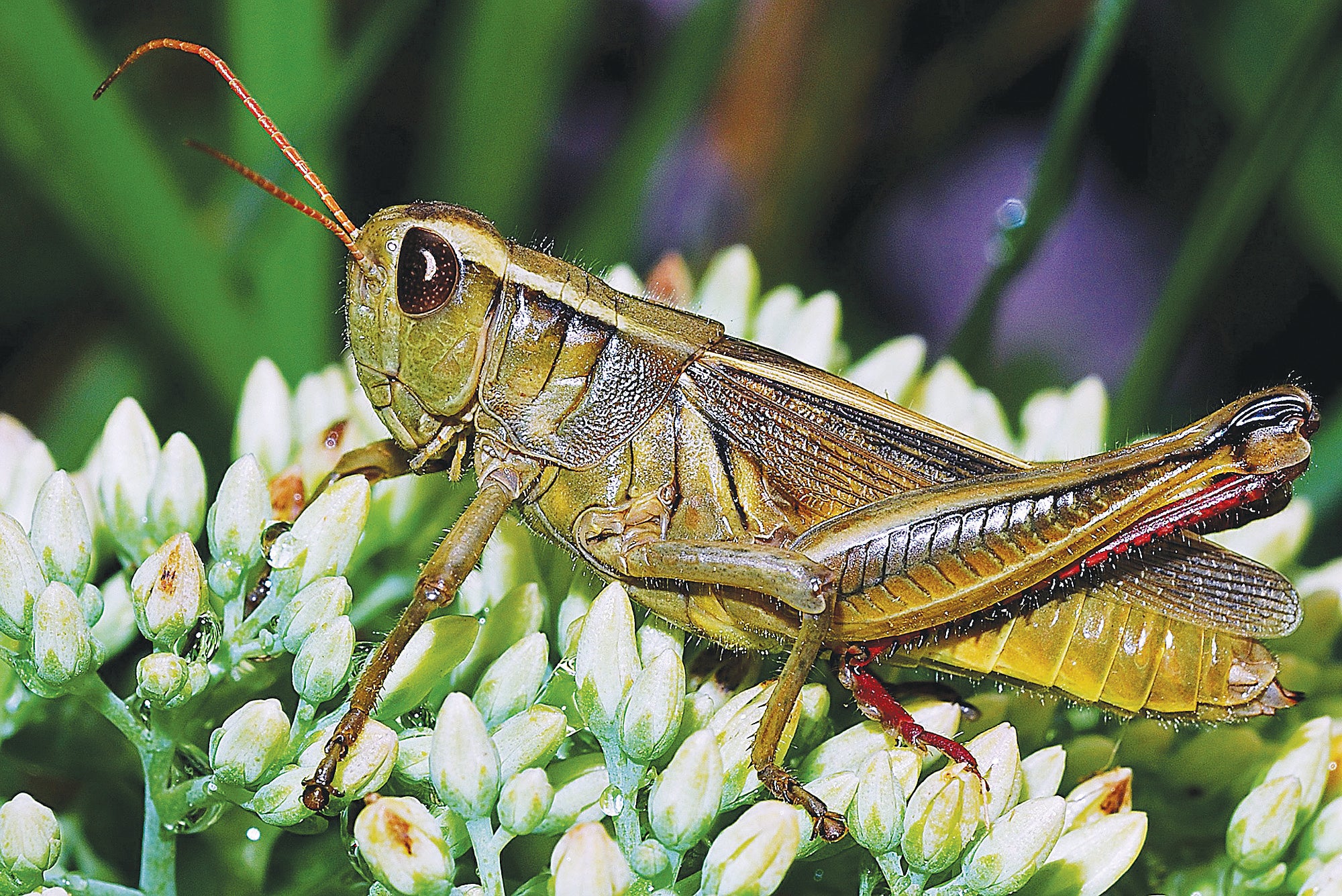Going Green
Published 9:59 am Monday, June 5, 2017

- Grasshoppers can leap 20 times the length of their own bodies.
A safe, green way to take care of those pesky, invasive species
I love plants of all kinds — even some plants others consider weeds. For the most part, unless they are an invasive species, I’ll let whatever kind of plants pop up and grow until it’s time to mow. But there are some places that I really don’t want plants to grow, like in the middle of my walkways. It’s really hard to pull weeds there though because a lot of them are small and they have rocks all around them.
It’s also problematic to get rid of the plants by spraying them because it’s hard to do it in a safe way. Something I dislike more than pesky weeds popping up between paving stones is putting harmful chemicals into the environment.
Recently, I found a possible solution: vinegar. Nothing fancy, just white vinegar from the store with 5-percent acidity. I did some research into how this works. I wanted to make sure it’s effective and wouldn’t hurt my soil. I was very pleased with the information I discovered.
It turns out vinegar is effective in killing lots of kinds of little weeds rather quickly. I couldn’t find a list of all of the kinds of weeds it kills, but it seems like it works on lots of types. I’m not a great botanist and can’t really identify many specific weeds anyway — unless they are dandelions.
To kill weeds with vinegar, all you have to do is spray the weeds with the vinegar. It seems too simple, but everything I’ve read says that it works. You don’t have to mix or measure anything, just use white vinegar in a spray bottle. If you are using a pump-sprayer, it’s a good idea to rinse it with water after you spray weeds in order to prevent corrosion. But even if you don’t have a big pump-sprayer, this option can work with a hand-held spray bottle.
Vinegar acts as a contact herbicide. Vinegar is acidic, so when you spray it directly onto the plants, it damages the green and leafy parts of the plant and the plant dies.
I haven’t tried it yet, but everything I read says this works best on plants with smaller roots. This is because it’s only killing the parts that it’s coming into contact with and plants with established root systems will be able to pop back up.
I also read that it works well on annuals (plants that grow new from seed every year), but perennials (plants that come back from the same roots every year) need to be sprayed more than once because they will keep trying to come back until their roots give up.
Everyone seems to agree that within 24 hours, the vinegar should have had an effect and all of the green weeds will be shriveled up and brown. For perennials and weeds with larger roots, you might have to spray them more than once with the vinegar.
It’s also important to note that the vinegar could harm whatever plants it comes into contact with, so be careful while you are spraying and make sure to only get what you are trying to kill.
I’ve also learned there are different kinds of vinegar with different percentages of acidity. I’m planning on trying this with 5-percent acidity. It seems like more acidic vinegars — there are 10-percent and 20-percent varieties — can be dangerous to work with.
This will be an easy project for me to take on because I already have plenty of white vinegar at my house all of the time. It’s a very useful thing — I use it to clean the kitchen and soften clothes.
I will try to clean up my walkways with vinegar and let you know how it goes in a future column.

Grasshoppers can leap 20 times the length of their own bodies.






